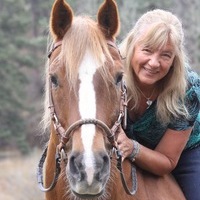
The Most Popular Horse Breeds Of 2019
Equestrian Advice & Guides General Equestrian
Build your business profile for FREE and expose your services to thousands of potential clients!
Create my profile now!
Clear, winter-crisp air, the crunch of snow, along with cold, numb toes and fingers makes horseback riding in winter a completely different experience than any other time, but you don’t want to give up riding for the three to nine months of cold, wet or snowy weather! So you keep at it and hope the season will be short and mild. But is it ever? Not if you live where it snows, or where the temps drop to zero or below. So, when is it too cold to ride—for both you and your horse—and what should you most be aware of for both of you?
The answer to how cold is too cold is subjective and dependent upon where you live, riding conditions, your age and health, your horse’s condition, and how much the cold bothers either of you. In general, here in the Rocky Mountains at 8500 feet elevation, we tend to err on the conservative side. Anything below thirty degrees Fahrenheit, and riding consists of walk-only, short, Colorado-level trails or arena time. But not everyone agrees that the temperature must be over freezing to work hard.
You know all the usual winter riding tips: dress in layers, wear warm boots, gloves, and watch your footing. Yours and your horse’s comfort and health are most important. Layers are pretty standard fare for any rider in any part of the world, but what about your horse? His coat is on permanently and he can’t layer up or down to adjust for the outside temperature and conditions.
For your horse, the temperature matters most if he is asked to work up a sweat and/or increase his respiration enough that he’s huffing and puffing—think jumping, long hill work, barrel racing, etc. The lower temperatures mean an increased chance of damage to muscles, joints, and lungs. Longer warm up times help—at least walking for twenty minutes before any faster gait is asked for—as well as decreasing the time the horse is asked to preform strenuously. Cool down times must also be extended so that your horse is back to his normal respiration and heart rates before you stop and untack. Pulmonary, joint, muscle and tendon problems can show up in the winter, even under well-managed workouts, so watch him closely and check him daily for signs that he’s being asked to do too much.
As to what to be most aware of, the answer is two-fold. One, hydration, and two, cooling down. These two things apply to both horse and rider. You each must drink more water than you want, and you must both cool down properly. Adding salt or electrolytes to his feed can help if you are finding he doesn’t want to drink enough. The cooling down part for you can be simply shedding some layers, then adding them back as you cool down, but for your horse in full winter coat, it’s a more extensive process.
Horses are comfortable in most winter conditions because their coats have grown thick and dense so they are insulated from the cold in a way we can only envy. But their winter coats are also the cause of problems if the horse is put away damp or wet after a winter work. Some tricks to drying a wet horse include:
This time consuming task of drying the wet horse’s long and dense coat begs the question of whether or not to clip him? The answer is, it depends on how hard you ride and where you live. Clipping along sweat patterns allows the horse to sweat same as always, but then, it is easier for him to cool down and dry off. Western riders seldom clip their horses, whereas English riders most often do. There are many clipping patterns to choose from and the process can greatly help riders wanting to cut their cool down time. It is imperative to blanket a clipped horse and best if that horse lives in a dry barn with ample bedding. If the neck is shaved, a sleazy or neck cover is needed.
If you are riding in an indoor arena for the winter, likely your horse can go barefoot if you choose, but if you ride trails, is that safe? The short answer is yes, he can feel the frozen ground and navigate if trimmed regularly. But are shoes on all fours a good idea? Again, the short answer is yes, but you’ll want snow pads and cleats to keep him snowball-free and upright. Usually, shoes are removed for winter, but sometimes, a horse needs to keep them on year-round. Talk to your farrier and discuss your riding needs, the terrain and weather conditions to make your decision.
Some other miscellaneous tips to keep in mind:
Here’s your free preview of YOU AND YOUR HORSE, HAPPILY EVER AFTER, due to be released February 2020! Laugh as you learn how to better the relationship between you and your horse.
https://lp.constantcontact.com/su/ajYbjFB
Have a safe winter, Happily Ever After!
~Tanya Buck
www.TanyaBuck.com

